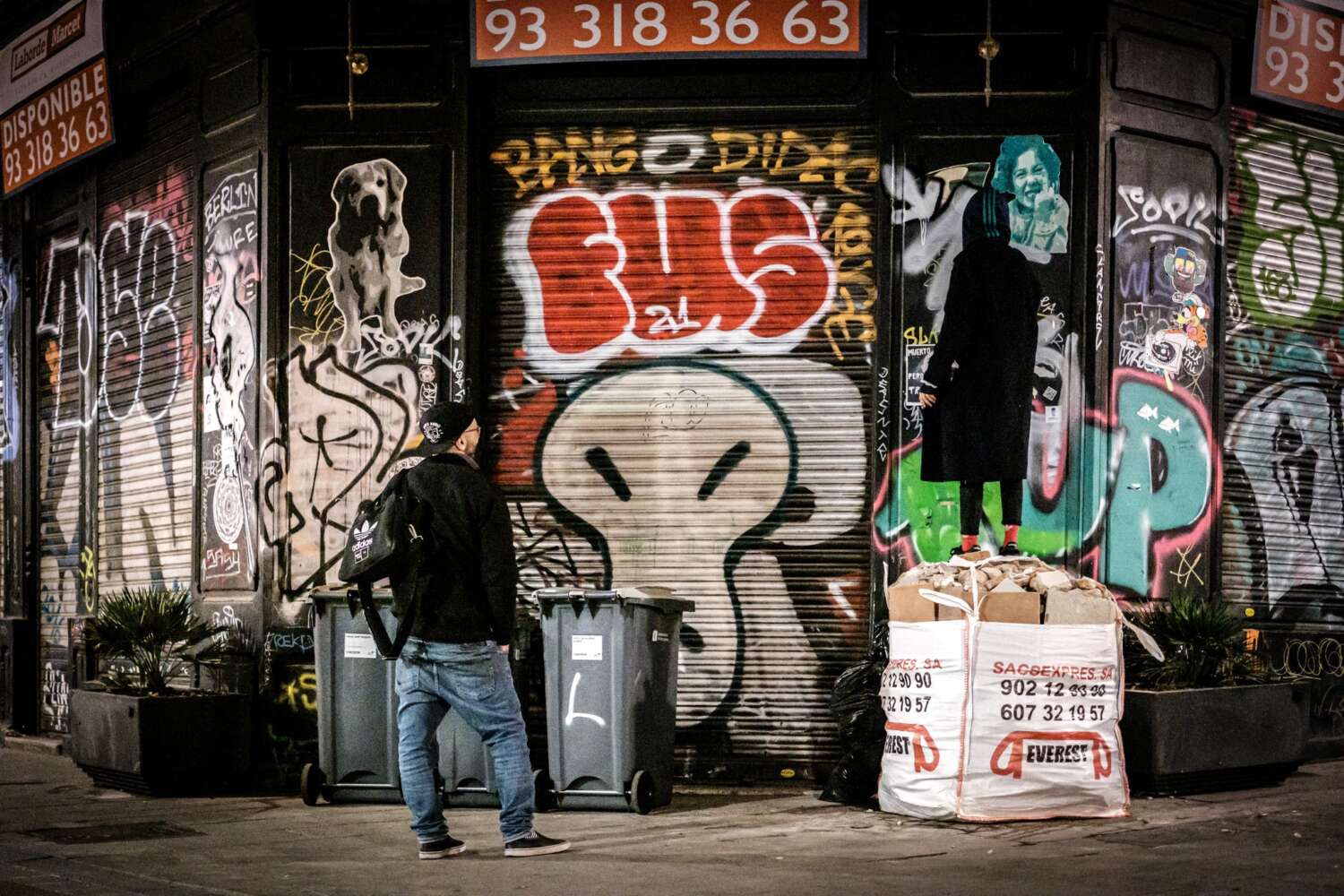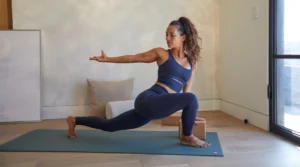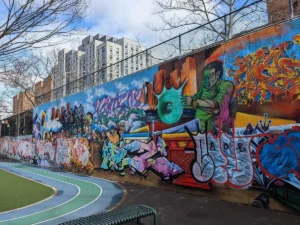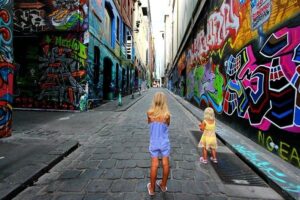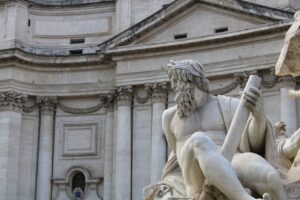Introduction to Barcelona’s Street Art Scene
Barcelona’s streets pulse with creativity, where every corner, alley, and shutter tells a story through vibrant murals, stencils, and graffiti. This city, known for its architectural wonders by Gaudí, is equally a canvas for urban artists who transform public spaces into open-air galleries. Street art in Barcelona isn’t just decoration—it’s a dialogue, reflecting the city’s social, cultural, and political heartbeat. From the rebellious tags of the 1970s to today’s celebrated murals, this art form captures the essence of urban culture.
The Roots of Street Art in Barcelona
Barcelona’s street art scene has deep roots, intertwined with the city’s history of rebellion and artistic innovation. Emerging in the post-Franco era, graffiti became a voice for a generation reclaiming public spaces. The 1980s saw an explosion of urban art, influenced by global trends from New York’s graffiti culture, with local artists adding a Catalan twist. By the 1990s, Barcelona had earned a reputation as Europe’s street art capital, thanks to its vibrant creative community and relaxed attitudes toward public expression.
The Influence of Franco’s Era
After Franco’s death in 1975, Spain’s transition to democracy unleashed a wave of creative freedom. Artists took to the streets to express dissent, identity, and hope, using walls as their canvas. This period laid the foundation for Barcelona’s street art culture, blending political commentary with artistic experimentation.
The Rise of Montana Colors
Barcelona is the birthplace of Montana Colors, the iconic spray paint brand created specifically for graffiti artists. Launched in 1994, it revolutionized street art by offering vibrant, durable paints tailored for urban creators. The Montana Shop and Gallery in the city remains a pilgrimage site for artists worldwide.
Neighborhoods That Define Barcelona’s Street Art
Barcelona’s street art is not confined to one area—it thrives across diverse neighborhoods, each with its own vibe. From the gritty charm of El Raval to the industrial canvas of Poblenou, these districts are living galleries where art evolves daily.
El Raval: The Heart of Urban Expression
El Raval, a melting pot of cultures, is a hotspot for raw, expressive street art. The neighborhood’s narrow alleys are adorned with murals, tags, and stencils that reflect its diverse community. A standout is Keith Haring’s iconic mural at MACBA, painted in 1989 to raise AIDS awareness, its bold red strokes still resonating today.
Poblenou: The Industrial Canvas
Once an industrial hub, Poblenou has transformed into a street art mecca. Its large, open walls attract international artists, with events like the OpenWall Conference showcasing works like Borondo’s 29-meter-high mural celebrating community unity. Poblenou’s murals often blend surrealism and social commentary, making it a must-visit for art lovers.
El Born and Gothic Quarter: History Meets Art
The Gothic Quarter and El Born offer a mix of historic charm and modern creativity. Here, you’ll find intricate stencils by artists like Konair and hyper-realistic portraits by Jorge Rodriguez-Gerada. The Mural del Beso in the Gothic Quarter, a mosaic of tiny photos, symbolizes love and community, drawing crowds daily.
El Carmel: Art with a View
Perched on the hills, El Carmel offers panoramic views and bold street art. The famous “El Tiburón” mural by Blu, depicting a shark made of €100 notes, critiques political corruption with striking imagery. This residential area balances tranquility with artistic rebellion.
L’Hospitalet de Llobregat: The Hidden Gem
Just outside Barcelona, L’Hospitalet is easily accessible by metro and boasts vibrant murals reflecting its diverse community. Artists like KRAM, active since 1997, leave their mark with colorful tags and large-scale pieces, making this area a treasure trove for explorers.
Iconic Street Artists Shaping Barcelona’s Scene
Barcelona’s street art is defined by a roster of talented artists, both local and international, who bring unique perspectives to the city’s walls. Here are some of the most influential names:
- Borondo: A Spanish artist known for expressionistic murals like the Poblenou castell, blending Catalan tradition with modern humanism. His work often explores the human psyche.
- Sixe Paredes: A Barcelona native whose abstract, colorful works draw on Catalan and Peruvian influences. His mural on the Tate Modern in 2008 put him on the global stage.
- Lady Aiko: A Japanese artist blending Eastern and Western styles, her vibrant stencils add a feminine perspective to Barcelona’s male-dominated scene.
- TVBoy: An Italian artist whose 2022 mural of footballer Alexia Putellas as a superheroine inspired a new generation, reflecting Barcelona’s passion for sports and art.
- KRAM: A graffiti veteran since 1997, his bold tags and murals in L’Hospitalet showcase the raw energy of Barcelona’s street culture.
Why These Artists Matter
These artists don’t just paint—they spark conversations. Their works tackle themes like community, identity, and resistance, making Barcelona’s streets a platform for dialogue. Each piece invites passersby to pause, reflect, and engage with the city’s soul.
The Evolution of Street Art Techniques
Street art in Barcelona has evolved from simple tags to complex, multi-layered works. Artists now use diverse techniques to stand out in a crowded urban landscape.
Stencils and Paste-Ups
Stencils, popularized by artists like Blek le Rat, allow for quick, precise designs. Paste-ups, like those by Konair, add character to shutters and alleys, offering a temporary yet impactful medium. Both techniques are perfect for Barcelona’s fast-paced street art scene.
Murals and Large-Scale Works
Large-scale murals dominate Poblenou and El Raval, with artists like Claudio Ethos using minimal color palettes to depict surreal, emotional states. These works transform entire buildings into storytelling canvases.
Tagging and Graffiti
Tagging remains the heartbeat of Barcelona’s graffiti culture. From KRAM’s vibrant throw-ups to Xupet Negre’s iconic characters, tags are a raw, unfiltered form of expression that keep the scene alive.
The Cultural and Social Impact of Street Art
Street art in Barcelona is more than aesthetics—it’s a mirror of the city’s soul. It reflects social issues, celebrates diversity, and challenges authority, making it a vital part of urban culture.
A Voice for Social Change
From Blu’s “El Tiburón” critiquing corruption to TVBoy’s feminist murals, street art addresses pressing issues. These works spark public debate, encouraging residents and visitors to question the status quo.
Community and Identity
Murals like Borondo’s composite portrait in Poblenou celebrate local communities, fostering a sense of belonging. In a city as diverse as Barcelona, street art bridges cultural gaps, uniting people through shared visual stories.
Economic and Touristic Value
Street art boosts Barcelona’s tourism, with guided tours like Barcelona Street Style Tours drawing thousands annually. Neighborhoods like Poblenou have become destinations, supporting local businesses and artists.
Where to Experience Barcelona’s Street Art
For those eager to explore, Barcelona offers countless ways to dive into its street art scene. Here’s how to get started:
Guided Tours
- Barcelona Street Style Tours: Offers walking and biking tours through El Raval, Poblenou, and the Gothic Quarter, led by local experts.
- Flamingo Tours: Specializes in private street art tours, perfect for personalized experiences.
- Cost: Tours typically range from €20–€50 per person, depending on duration and group size.
Self-Guided Exploration
- Start at MACBA: Scout the surrounding El Raval area for Haring’s mural and other gems.
- Poblenou’s Open Walls: Wander Carrer de la Riereta for Sixe Paredes’ vibrant works.
- Apps and Maps: Use apps like Street Art Cities or Google Maps curated by locals for real-time mural locations.
Events and Festivals
- OpenWall Conference: An annual event in Poblenou showcasing international artists.
- Bostik Murals: Visit Nau Bostik for workshops, talks, and live mural painting.
Comparing Street Art Hotspots
| Neighborhood | Vibe | Key Artists | Must-See Works | Accessibility |
|---|---|---|---|---|
| El Raval | Gritty, diverse | Keith Haring, KRAM | Haring’s AIDS mural | Metro: Liceu, central |
| Poblenou | Industrial, open | Borondo, Sixe Paredes | Borondo’s castell mural | Metro: Llacuna, slightly out |
| Gothic Quarter | Historic, vibrant | Konair, Jorge | Mural del Beso | Metro: Jaume I, walkable |
| El Carmel | Residential, scenic | Blu | El Tiburón | Metro: El Carmel, hilly |
| L’Hospitalet | Multicultural, raw | KRAM | Vibrant tags | Metro: Torrassa, suburban |
Pros and Cons of Exploring Each Area
El Raval
Pros: Central, diverse art, easy to navigate.
Cons: Can feel crowded, some areas less safe at night.
Poblenou
Pros: Large-scale murals, open spaces, festival hub.
Cons: Less central, requires metro travel.
Gothic Quarter
Pros: Walkable, historic charm, tourist-friendly.
Cons: Smaller works, easy to miss without a guide.
El Carmel
Pros: Stunning views, bold murals, quiet vibe.
Cons: Hilly terrain, less accessible.
L’Hospitalet
Pros: Authentic, less touristy, diverse art.
Cons: Outside city center, requires planning.
People Also Ask (PAA) Section
What is street art in Barcelona like?
Barcelona’s street art is a vibrant mix of murals, stencils, and graffiti reflecting social, cultural, and political themes. From surreal works in Poblenou to historic pieces in the Gothic Quarter, it’s a dynamic expression of urban culture.
Where can I find the best street art in Barcelona?
Top spots include El Raval (MACBA area), Poblenou (OpenWall sites), and the Gothic Quarter (Mural del Beso). Guided tours or apps like Street Art Cities help locate the latest works.
Is street art legal in Barcelona?
While some areas like Jardíns de les Tres Xemeneies offer legal “free walls” through the Murs Lliures program, unauthorized graffiti faces fines due to strict laws since 2006. Always check permissions before painting.
Who are the top street artists in Barcelona?
Artists like Borondo, Sixe Paredes, Lady Aiko, TVBoy, and KRAM lead the scene, each bringing unique styles from expressionism to vibrant tags. Their works define Barcelona’s urban identity.
Challenges and Controversies
Street art in Barcelona isn’t without its struggles. The 2006 crackdown on graffiti led to hefty fines and whitewashed walls, sparking debates over vandalism versus art. Posts on X reflect this tension, with some calling unauthorized graffiti a crime, while others defend it as expression when permitted. Legal walls and festivals have eased tensions, but the balance between freedom and regulation remains delicate.
The Vandalism Debate
Critics argue that unauthorized tags deface public spaces, while supporters see them as vital expressions of creativity. Legal spaces like Tres Xemeneies provide a compromise, allowing artists to create without fear of prosecution.
Preservation vs. Ephemerality
Street art’s temporary nature is part of its charm, but preserving iconic works like Haring’s mural poses challenges. Museums like Bostik Murals aim to bridge this gap, offering permanent spaces for urban art.
Tools and Resources for Street Art Enthusiasts
For those inspired to explore or create, here are the best tools and resources:
- Street Art Cities App: A global platform for finding murals, with detailed Barcelona maps.
- Montana Colors Spray Paint: High-quality paints for aspiring artists, available at Montana Shop.
- Barcelona Street Style Tours: Guided experiences for in-depth exploration.
- Workshops at Nau Bostik: Hands-on sessions for learning mural techniques.
Where to Buy Art Supplies
- Montana Shop: Located in El Raval, it’s the go-to for spray paints and graffiti magazines.
- Local Art Stores: Check out Carrer de la Riereta for affordable supplies.
- Online: Websites like montanacolors.com ship globally.
FAQ Section
1. What makes Barcelona’s street art unique?
Barcelona’s street art blends Catalan heritage with global influences, addressing social issues through vibrant, diverse styles. Its neighborhoods, from El Raval to Poblenou, offer distinct artistic vibes.
2. Are there legal places to create street art in Barcelona?
Yes, the Murs Lliures program provides legal walls, like those at Jardíns de les Tres Xemeneies, where artists can reserve spaces to paint without penalties.
3. How can I join a street art tour in Barcelona?
Book through providers like Barcelona Street Style Tours or Flamingo Tours for walking or biking experiences. Prices range from €20–€50, with private options available.
4. Who are some female street artists in Barcelona?
Lady Aiko is a prominent figure, known for her vibrant stencils blending Eastern and Western styles. Her work adds diversity to the scene.
5. Can I visit street art museums in Barcelona?
Yes, Bostik Murals at Nau Bostik is Barcelona’s first urban art museum, offering exhibitions, workshops, and talks by artists like Sixe Paredes.
Conclusion: Why Barcelona’s Street Art Matters
Barcelona’s street art is a living testament to the city’s rebellious spirit and creative soul. It’s not just paint on walls—it’s a conversation between artists, communities, and visitors. Whether you’re wandering El Raval’s alleys, marveling at Poblenou’s murals, or joining a guided tour, you’re stepping into a world where urban culture becomes art. So grab a map, lace up your shoes, and let Barcelona’s streets tell you their stories.
